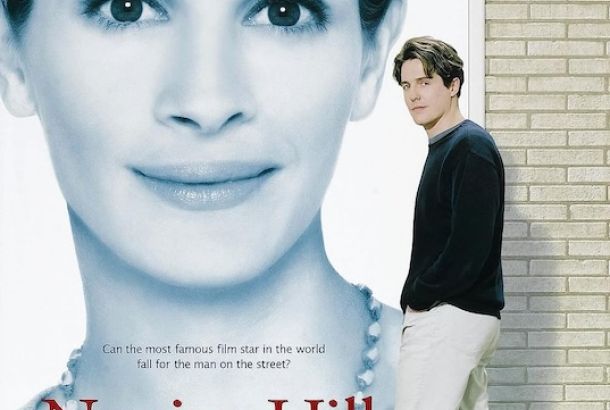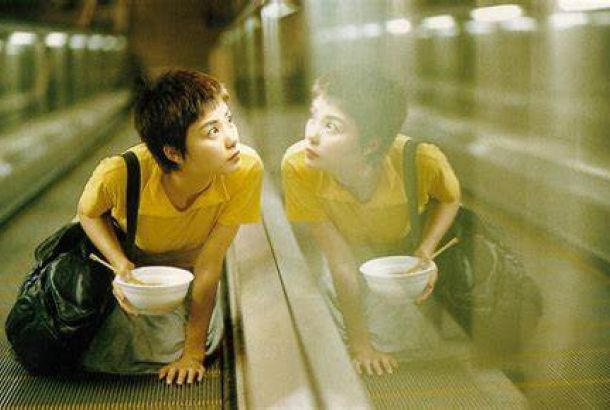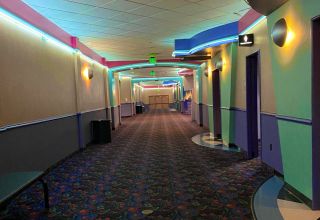If Lanthimos‘ previous project unsettled you, then The Killing of a Sacred Deer will leave you very numb, as the likelihood is you will not have seen anything quite as crippling and as dark as this before.
The disquieting orchestral score rings eerily throughout, characters walking down corridors are made to feel like slow and painful operations, and deadpan execution of bleak humorous dialogue evokes an abstract, yet all too familiar, disillusionment.
The film opens with a close-up shot of a bloody, pulsating, human heart in midst of an operation, and essentially sets the tone for this gruelling, quite frankly masterful, piece of cinema. A penetrable, open wound, with blood and guts beating beneath the surface of a mundane family portrait.
Colin Farrell plays Steven, the operating heart surgeon, who recreates the monotonic dryness of David in The Lobster.
He compliments his colleague, the anaesthetist, on his watch, before they debate whether a leather or metal strap looks and functions better. Although it is not the central question raised by the film, this perhaps sets up the more pressing matter Steven theorises; it is never the surgeon who is blamed for an operation; it is always the anaesthetist’s fault.
The plot primarily concerns Steven and his unusual relationship with an odd young boy called Martin — played with credible creepiness by Barry Keoghan. The pair meet in secret, and Farrell’s protagonist gives the boy presents, including the very watch he discussed with his anaesthetist.
In an odd move, in which any possible notion that their relationship might be secret or sexual is quelled, Steven invites Martin for dinner with his family.
While his family are endearing, statically wooden, and sweet, Martin is strange, yet innocent when addressing Steven’s polite wife Anna (Nicole Kidman) and the two kids, Bob (Sunny Suljic) and Kim (Raffey Cassidy). They gaze at Martin as though he were an intoxicating infection loitering in their home.
It transpires that Steven and Martin’s relationship is founded on an underlying guilt, and the blame Martin places on Steven for being responsible for his own father’s death during a surgery which went wrong. A wrong which can only be righted, says Martin, spitting as he tries to get the words out as quickly as physically possible, if Steven kills one of his family members, otherwise all three will slowly become paralysed, cry blood, and die one by one.
Odd, yes. Another strange, fantastical, and wholly sadistic ‘moral’ dilemma brought to us by Lanthimos. Whether the family’s fate is a curse, magic, or the supernatural is of course, never fully explained. Instead, the film indulges in the darkness of this bleak premise, and things turn more graphic and sadistic — Martin is taped to a chair in Steven’s basement in one bloody scene.
Even though it is Steven’s medical failure, due to alcoholism, which is the root of the trouble, it is Lanthimos who is at the core of our torment.
Sure enough, Steven’s dainty children begin to endure unexplained bodily dysfunctions. Bob finds he suddenly cannot move his legs, and collapses dramatically in an aerial shot of him and Anna reaching the end of an escalator, the power of movement simply gone from under him.
Kim is soon doing the same. Their disabilities are excruciating and unsettling, shown through shots — verging on humorous — of the children literally crawling like slugs, with their limp legs behind them across their kitchen floor, as their parents tragically try to deal with it as if it were as ordinary as the flu.
After initially denying the possibilities of such a curse, Steven eventually realises he must do as Martin says and kill one of his family members. The children argue to prove to their father that they should not be the one who he kills. This sad scenario is dealt with such mundane dryness that it can’t help but become black comedy. You feel scared and the need to laugh in equal measure.
Questions are raised, but it is not clear how best to answer them. If this film has some deeper sociological mediations, they are not of this world — though perhaps an all too familiar theme is evoked; the idyllic suburban family penetrated by darker, deep-rooted outside forces, unsettling the status quo, creating a tense cover-your-eyes atmosphere.
A masterful succession to The Lobster, and in its own right a thrilling spectacle, The Killing of a Sacred Deer compliments Lanthimos’ previous, and establishes its own, unique way of both thrilling and disgusting us. Slaughtering a deer, and any association we have with the real established order, right in front of our eyes.
5/5







